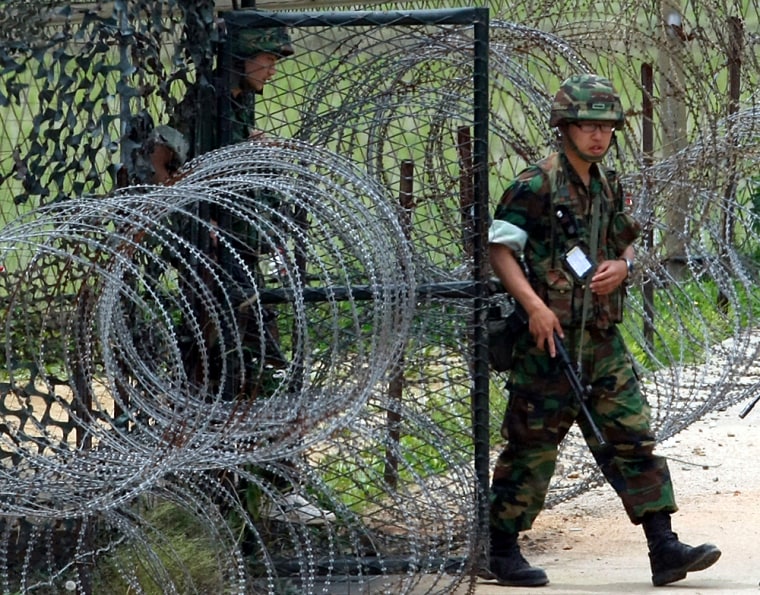North Korea's New Year's wish of seeing the destruction of a massive concrete wall dividing the Korean peninsula never seems to come true — because there is no such barrier.
Mentioning the wall by the North has been an odd New Year tradition begun by state founder Kim Il-sung and kept alive by a fawning propaganda machine that dares not correct a person revered as a deity. Kim died 15 years ago and is considered the state's "eternal president."
The Korean peninsula is divided by a 4-km (2.5 mile) wide Demilitarized Zone (DMZ) with razor wire fences on the North and South side, but features no concrete barrier as claimed by the North.
But that did not stop North Korea's ruling party newspaper on Wednesday from coming out with its demand that the wall be demolished because "it runs diametrically counter to the desire and demand of the nation and the trend of the times."
The idea of a Korean wall across the Cold War's last frontier was a creation of the times, specifically, the fall of the Berlin Wall, which marked the symbolic end of the Cold War in Europe.
A few weeks after the Berlin Wall started coming down in 1989, Kim Il-sung said in a New Year's address that Seoul had built a massive concrete wall to divide the two states, which are technically still at war.
Analysts said Kim made the claim to rally support for his state as its communist allies were fading. At the time Seoul was working to set up formal ties with the Soviet Union, then the North's biggest benefactor.
Kim, who helped secure power by turning his country into one of the world's most isolated and insular states, said in the speech to welcome 1990 that the wall was "a barrier of national division" preventing free travel between the two countries.
Some international news reports accepted Kim's pronouncement as fact, prompting Seoul to invite journalists and observers a few weeks later to look into the DMZ to see for themselves that the wall did not exist.
The North likely spotted concrete tank barriers set up south of its end of the DMZ and assumed the South was building a wall across the peninsula, analysts have said. The DMZ was set up in the armistice that halted fighting in the 1950-53 Korean War.
North Korea's official media has painted a vivid picture of the wall that is not there.
It says the border wall stands 5 meters (16 ft) to 8 meters (26 ft) high, is as thick as 19 meters and was built in the 1970s by a "South Korean military fascist clique."
